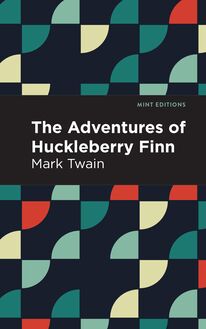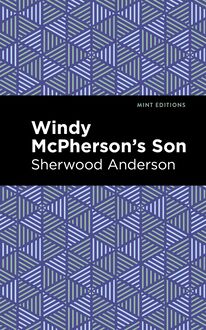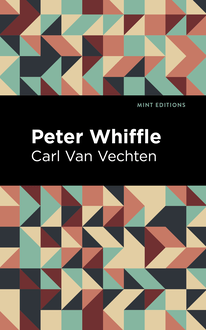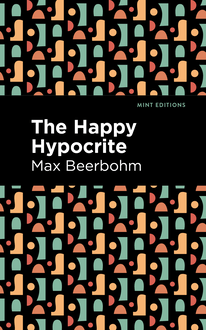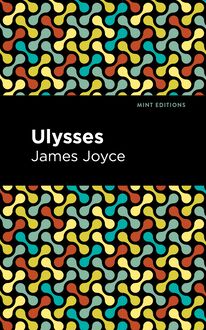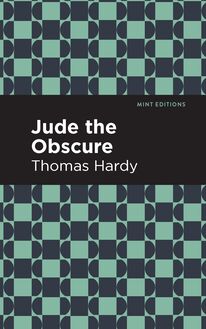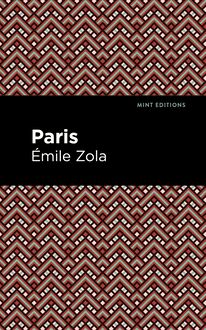-
 Univers
Univers
-
 Ebooks
Ebooks
-
 Livres audio
Livres audio
-
 Presse
Presse
-
 Podcasts
Podcasts
-
 BD
BD
-
 Documents
Documents
-
- Cours
- Révisions
- Ressources pédagogiques
- Sciences de l’éducation
- Manuels scolaires
- Langues
- Travaux de classe
- Annales de BEP
- Etudes supérieures
- Maternelle et primaire
- Fiches de lecture
- Orientation scolaire
- Méthodologie
- Corrigés de devoir
- Annales d’examens et concours
- Annales du bac
- Annales du brevet
- Rapports de stage
La lecture à portée de main
Vous pourrez modifier la taille du texte de cet ouvrage
Découvre YouScribe en t'inscrivant gratuitement
Je m'inscrisDécouvre YouScribe en t'inscrivant gratuitement
Je m'inscrisEn savoir plus
Vous pourrez modifier la taille du texte de cet ouvrage
En savoir plus

Description
The Child of Pleasure (1889) is a novel by Gabriele D’Annunzio. The first in a series of three novels exploring the lives of the Italian bourgeoisie, The Child of Pleasure marked a shift in D’Annunzio’s early writing, which consisted of poems in the Symbolist tradition. Considered a central text of Italian Decadentism, the novel has earned comparisons to the work of Oscar Wilde and Joris-Karl Huysmans. “The next evening, he arrived at the palace a few minutes earlier than usual, with a wonderful gardenia in his button-hole and a vague uneasiness in his mind. His coupé had to stop in front of the entrance, the portico being occupied by another carriage, from which a lady was alighting. The liveries, the horses, the ceremonial which accompanied her arrival all proclaimed a great position. The Count caught a glimpse of a tall and graceful figure, a scintillation of diamonds in dark hair and a slender foot on the step.” From his home at the Palazzo Zuccari, Andrea Sperelli leads a life in pursuit of beauty, pleasure, and women. When an ex-lover returns to Rome following the breakdown of her marriage, he loses interest in his numerous affairs and longs to regain her love. But the past proves difficult to forget, the memories of betrayal and unhappiness no less painful after so many years apart. Wounded in a duel, Andrea is taken to a rural village to recuperate. There, he meets the beautiful Maria, who seems to promise a life of love and friendship. With a beautifully designed cover and professionally typeset manuscript, this edition of Gabriele D’Annunzio’s The Child of Pleasure is a classic work of Italian literature reimagined for modern readers.
Sujets
Informations
| Publié par | Mint Editions |
| Date de parution | 08 juin 2021 |
| Nombre de lectures | 0 |
| EAN13 | 9781513294049 |
| Langue | English |
| Poids de l'ouvrage | 1 Mo |
Informations légales : prix de location à la page 0,0500€. Cette information est donnée uniquement à titre indicatif conformément à la législation en vigueur.
Extrait
The Child of Pleasure
Gabriele D’Annunzio
The Child of Pleasure was first published in 1889.
This edition published by Mint Editions 2021.
ISBN 9781513291192 | E-ISBN 9781513294049
Published by Mint Editions®
minteditionbooks .com
Publishing Director: Jennifer Newens
Design & Production: Rachel Lopez Metzger
Project Manager: Micaela Clark
Translation: Georgina Harding and Arthur Symons
Typesetting: Westchester Publishing Services
C ONTENTS I NTRODUCTION B OOK I I II III IV V VI VII VIII IX X B OOK II I II III IV V B OOK III I II III IV V B OOK IV I II III IV V VI VII VIII IX X
I NTRODUCTION
It is characteristic of the atmosphere of legend in which Gabriele d’Annunzio has lived that even the authenticity of his name has been disputed. It was said that his real name was Gaetano Rapagnetta, and the curious will find amongst the Letters of James Huneker the boast that he was the first person to reveal to America the fact that d’Annunzio’s name was “Rapagnetto”—a purely personal contribution to the legend. Yet, the plain fact, as proven by his birth certificate, is that the author of “The Child of Pleasure” was born at Pescara, on the 12th of March, 1863, the son of Francesco Paolo d’Annunzio and Luisa de Benedictis. Il Piacere, to give this novel its Italian name, was published when d’Annunzio was only twenty-six years of age, and except for an unimportant and imitative volume of short stories, it was his first sustained prose work. It is the book which at once made the novelist famous in his own country and very soon afterwards in England and France, where it was the first of his works to be translated. In America d’Annunzio was already known as the author of a powerful realistic novelette, “Episcopo & Co.,” which was published in Chicago in 1896, two years before “The Child of Pleasure” appeared in London. As has so often happened since, America led the way in introducing into the English language a writer who is one of the foremost figures in Continental European literature.
In order to realize the sensation which Gabriele d’Annunzio created, it is necessary to glance back at the opinions of some of his early champions in foreign countries. Ouida claims, I think rightly, that her article in the Fortnightly Review, which was reprinted in her “Critical Studies,” was the first account in English of the author and his work. In the main, although besprinkled with moral asides, it is, with one exception, as good an essay as any that has since been written on the subject. Ouida was sure that the wickedness of d’Annunzio was such that the only work of his which will become known to the English public in general will be the Vergini delle Rocce, because “(as far as it has gone) it is not indecent. The other works could not be reproduced in English.” In proof of her contentions Ouida disclosed the fact that the French versions of the trilogy, “The Child of Pleasure,” “The Victim,” and “The Triumph of Death,” were bowdlerized. At the same time she obligingly referred her readers to some of the choicer passages in the original, such as Chapter X of “The Child of Pleasure,” where she claimed that “ingenuities of indecency” had been gratuitously introduced. For the guidance of those interested in such matters I may explain that, by a coincidence, the “ingenuity” in question is almost identical with that which was cited in the earlier part of La Gar ç onne as proof that Victor Margueritte was unworthy of the Legion of Honor.
After Ouida in England came the venerable Vicomte Melchior de Vog üé in France, who is best known to readers in this country for his standard tome on the Russian novel. In the austere pages of the Revue des Deux Mondes he carefully explained to his readers that d’Annunzio’s lewdness must not be confused with the obscenities of Zola, whereat Ouida protested that they were alike in their complacent preoccupation with mere filth. The Frenchman is the sounder critic, it must be said, for while d’Annunzio frequently parallels some of the most unclean—in the literal, not the moral sense—scenes and incidents in Zola, his attitude about sex is as unlike Zola’s as that of the late W. D. Howells. Only in “Nana” did Zola describe the life and emotions of a woman whose whole life is given up to love, and then, as we know, he chose a singularly crude and professional person, using her career as a symbol of the Second Empire. D’Annunzio has never described women with any other reason for existence but love, yet none of his heroines has poor Nana’s uninspiring motives. They are amateurs with a skill undreamed of in Nana’s philosophy; they believe in love for art’s sake. Consequently, the French critic was right in insisting that Zola and d’Annunzio are two very different persons, although confounded in an identical obloquy by the moralists. He is, however, not quite so subtle when he tries to argue from this that, in the conventional sense, d’Annunzio is more moral.
At this point I will cite an unexpectedly intelligent witness, one of the early admirers of d’Annunzio in English, and the author of an essay on him which is assuredly the best which has appeared in that language. This is what Henry James has to say of “The Child of Pleasure” in his “Notes on Novelists”: “Count Andrea Sperelli is a young man who pays, pays heavily, as we take it we are to understand, for an unbridled surrender to the life of the senses; whereby it is primarily a picture of that life that the story gives us. He is represented as inordinately, as quite monstrously, endowed for the career that from the first absorbs and that finally is to be held, we suppose to engulf him; and it is a tribute to the truth with which his endowment is presented that we should scarce know where else to look for so complete and convincing an account of such adventures. Casanova de Seingalt is of course infinitely more copious, but his autobiography is cheap loose journalism compared with the directed, finely-condensed iridescent epic of Count Andrea.”
It would be difficult to find, couched in such euphemistically appreciative language, so accurate a summary of the intention and quality of this book. Casanova is pale, diffuse, and unconvincing, indeed, beside the d’Annunzio who so early gave his full measure as the supreme novelist of sensual pleasure in this book. As Arthur Symons so well says, “Gabriele d’Annunzio comes to remind us, very definitely, as only an Italian can, of the reality and the beauty of sensation, of the primary sensations; the sensations of pain and pleasure as these come to us from our actual physical conditions; the sensation of beauty as it comes to us from the sight of our eyes and the tasting of our several senses; the sensation of love, which, to the Italian, comes up from a root in Boccaccio, through the stem of Petrarch, to the very flower of Dante. And so he becomes the idealist of material things, while seeming to materialize spiritual things. He accepts, as no one else of our time does, the whole physical basis of life, the spirit which can be known only through the body.”
D’Annunzio has declared that the central male character in all three novels, Andrea Sperelli in “The Child of Pleasure,” Tullio Hermil in “The Intruder” and Giorgio Aurispa in “The Triumph of Death,” are projections of himself. They are as autobiographical as Stelio Effrena in “The Fire of Life,” which is generally accepted as an elaboration of the poet’s life with Eleonora Duse. His attitude, therefore, is clearly defined in the passage where he says: “In the tumult of contradictory impulses Sperelli had lost all sense of will power and all sense of morality. In abdicating, his will had surrendered the sceptre to his instincts; the æ sthetic was substituted for the moral sense. This æ sthetic sense, which was very subtle, very powerful and always active, maintained a certain equilibrium in the mind of Sperelli. Intellectuals such as he, brought up in the religion of Beauty, always preserve a certain kind of order, even in their worst depravities. The conception of Beauty is the axis of their inmost being: all their passions turn upon that axis.” He is, in other words, the re-incarnation of Don Juan, pursuing in woman an elusive and impossible ideal.
If d’Annunzio had not gone into the adventure of the war, with its sequel at Fiume, we might have continued to enjoy the spectacle of the adventures of this restless soul amongst feminine masterpieces. As a soldier and a statesman his prestige in the English-speaking world is low, and we are apt to forget while reading the political bombast of the years of the war and the period after the Armistice that it differs in no respect from all other patriotic claptrap, except that it is the work of the greatest living master of Italian prose. Of this fact his early novels are a needed reminder to a generation which is making its acquaintance with Italian writers of today through the intermediary of a converted anti-clerical, who cannot even retell the story of Christ without branding himself a vulgarian. In the prim days when young d’Annunzio first flaunted his carnal delights and sorrows before a world not yet released from Victorian stuffiness, the word “vulgar” was a polite English epithet for “fleshly,” an adjective much beloved by indignant gentlemen who were permitting their wrath to triumph over their desire to be respectable. It is a word which we apply nowadays to the writings of a vulgarian like Papini, whose name is now as familiar to the general public as d’Annunzio’s was when “The Child of Pleasure” was first translated. That is a measure of progress in this connection which justifies the hope that the “idealist of material things” will find again an audience which can understand and appreciate his quest.
D’Annunzio has nothing to offer the sterile theorists of the new illiterate literature, who are as incapable of appreciating his refined and subtle perversities
-
 Univers
Univers
-
 Ebooks
Ebooks
-
 Livres audio
Livres audio
-
 Presse
Presse
-
 Podcasts
Podcasts
-
 BD
BD
-
 Documents
Documents
-
Jeunesse
-
Littérature
-
Ressources professionnelles
-
Santé et bien-être
-
Savoirs
-
Education
-
Loisirs et hobbies
-
Art, musique et cinéma
-
Actualité et débat de société
-
Jeunesse
-
Littérature
-
Ressources professionnelles
-
Santé et bien-être
-
Savoirs
-
Education
-
Loisirs et hobbies
-
Art, musique et cinéma
-
Actualité et débat de société
-
Actualités
-
Lifestyle
-
Presse jeunesse
-
Presse professionnelle
-
Pratique
-
Presse sportive
-
Presse internationale
-
Culture & Médias
-
Action et Aventures
-
Science-fiction et Fantasy
-
Société
-
Jeunesse
-
Littérature
-
Ressources professionnelles
-
Santé et bien-être
-
Savoirs
-
Education
-
Loisirs et hobbies
-
Art, musique et cinéma
-
Actualité et débat de société
- Cours
- Révisions
- Ressources pédagogiques
- Sciences de l’éducation
- Manuels scolaires
- Langues
- Travaux de classe
- Annales de BEP
- Etudes supérieures
- Maternelle et primaire
- Fiches de lecture
- Orientation scolaire
- Méthodologie
- Corrigés de devoir
- Annales d’examens et concours
- Annales du bac
- Annales du brevet
- Rapports de stage


